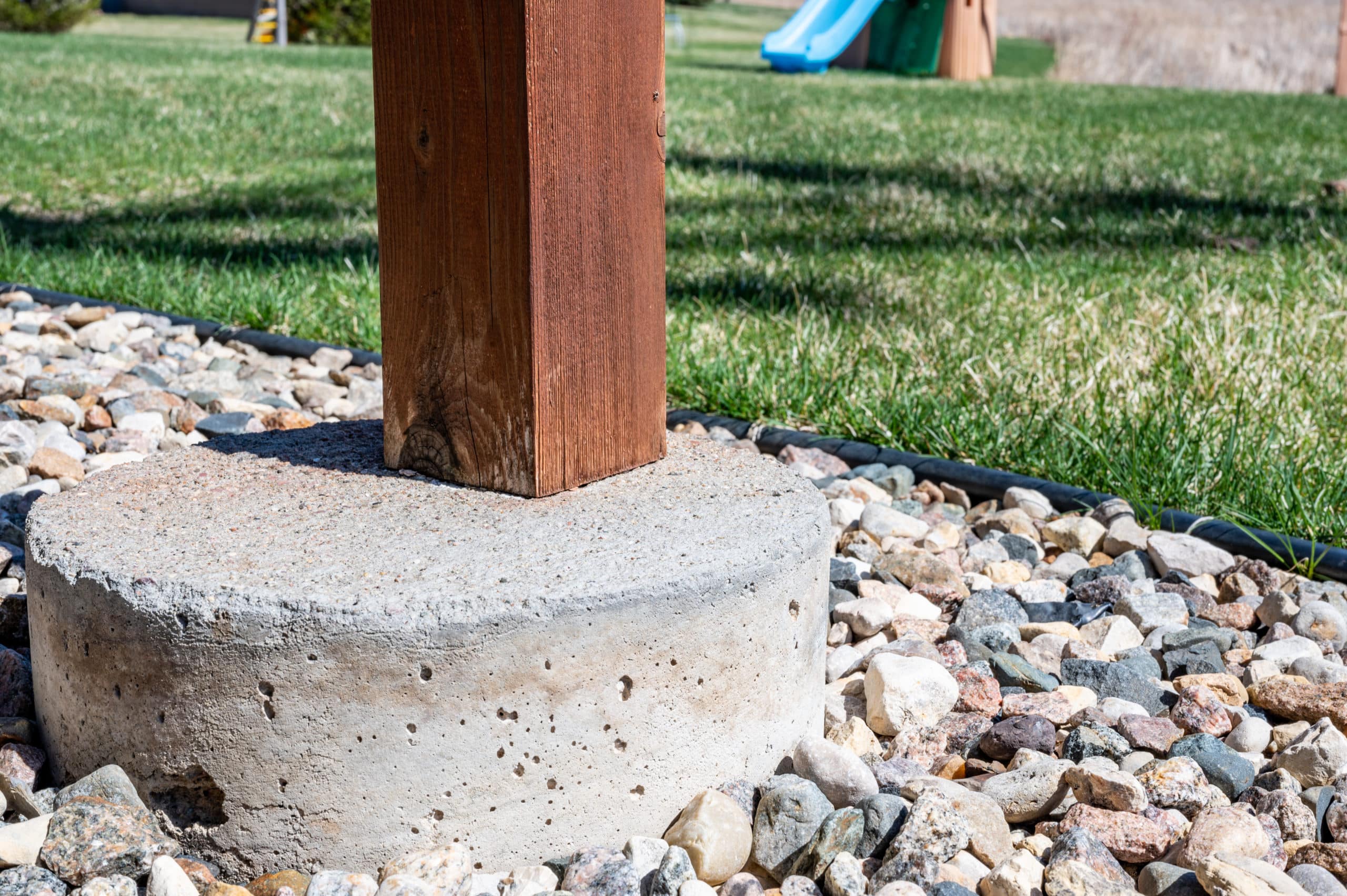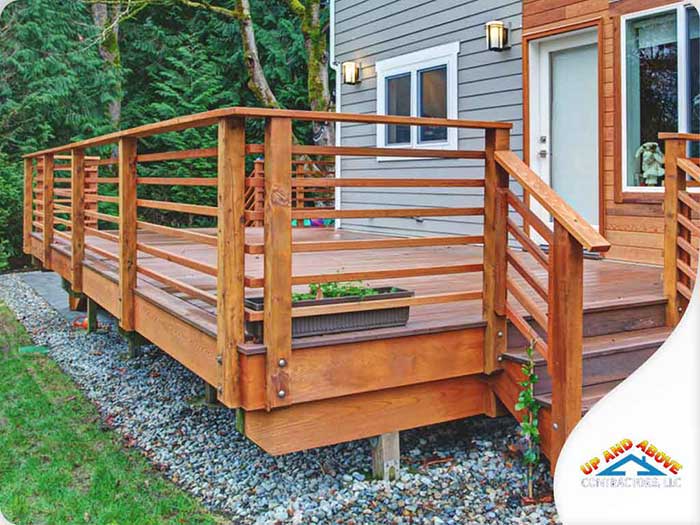Structural Honesty Issues: Choosing the Right Deck Footings for Your Outdoor Project
Optimize the Life Expectancy of Your Deck With Trustworthy and Solid Footings
As home owners, we spend a considerable quantity of time and resources into producing the excellent outdoor space. A deck is typically the focal point of that room, offering a location to loosen up, captivate, and delight in the beauty of nature. In order to completely optimize the life-span of your deck, it is vital to guarantee that it is constructed on solid and reputable footings. These footings create the structure of your deck, giving security and assistance, and are typically the difference between a deck that lasts for decades and one that calls for constant repair work. In this conversation, we will certainly discover the significance of reputable footings, the various kinds of solid footing products, proper installment techniques, and how to keep and examine your deck's grounds to prevent damages. Whether you are in the procedure of looking or developing a brand-new deck to enhance the durability of your existing one, join us as we discover the keys to a deck that stands the examination of time.
Value of Trusted Grounds
The importance of dependable footings can not be overemphasized when it involves making best use of the lifespan of your deck. The footings serve as the structure whereupon the whole framework rests, supplying security and assistance. Without a strong ground, the deck is at risk to changing, sinking, and also collapse, which can significantly decrease its lifespan and position security dangers.

Picking the right sort of footing is likewise crucial. The most typical kinds consist of concrete grounds, helical piers, and sonotubes. Elements such as dirt conditions, climate, and the dimension of the deck will certainly determine the most appropriate alternative. Working with an expert to assess the dirt, layout the footings, and ensure appropriate setup is extremely advised.
Spending in reliable footings might entail added price and initiative upfront, yet it is a rewarding financial investment that will certainly add to the lasting longevity and safety and security of your deck. By ensuring a solid foundation, you can enjoy your deck for several years ahead, recognizing that it is constructed to stand up to the test of time.
Types of Strong Ground Products
To ensure the stability and longevity of your deck, it is important to think about the various kinds of strong footing materials available. The selection of footing material is important as it offers the needed support and stability to hold up against the weight and tons of the deck structure.
One reliable and usual material used for deck grounds is concrete. Concrete footings are sturdy and supply outstanding security. They can be poured straight into the ground or use precast concrete grounds for simpler installment. One more option is helical piers, which are steel shafts with helical plates that are screwed into the ground. These piers offer superb load-bearing capability and can be made use of in different dirt conditions.
For areas with bad dirt problems, such as loosened or extensive dirts, a footing system that utilizes steel or composite piers might be liked. Deck Footings. These piers are driven deep into the ground to reach steady dirt layers, guaranteeing the security of the deck
Sometimes, deck footings can also be created using treated lumber. It is crucial to make certain that the lumber is correctly dealt with to resist rot and degeneration triggered by direct exposure to dampness and insects.
When choosing a footing material for your deck, it is crucial to consider elements such as soil conditions, environment, and regional building ordinance. Consulting with a specialist service provider or architectural designer can aid identify the most suitable footing material for your particular deck task.
Correct Installation Techniques for Footings
Considering the significance of making sure security and toughness for your deck, it is vital to recognize the proper installment strategies for grounds. The success of your deck job depends heavily on the stability of its foundation, which is why following the appropriate installation strategies is critical.
Most importantly, it is essential to identify the suitable size and deepness of the grounds based on the design and lots needs of your deck. This info can be gotten from building codes or through consultation with an architectural engineer. As a basic guideline, footings should go to least 12 inches in diameter and expand below the frost line to avoid shifting or clearing up.
As soon as the dimensions are developed, the following step is excavation. Digging the openings for the footings must be made with precision, ensuring they are deep sufficient and have a degree bottom. Deck Footings. This will certainly supply a stable base for the footings
To additionally enhance the security of the footings, it is advised to utilize a concrete blend with a stamina of at the very least 3,000 psi. This will make certain the footings can hold up against the weight and forces applied by the deck.
During installment, it is necessary to maintain the grounds level and straightened correctly. This can be achieved by utilizing a level and string lines to guide the positioning of each ground.
Preserving and Inspecting Your Deck's Footings
Routine upkeep and thorough examinations are vital for ensuring the long-lasting security and safety and security of your deck's footings. With time, footings can yield to deterioration, weather, and soil movement, which can compromise their structural honesty. To make best use of the life-span of your deck's footings, it is important to carry out a normal maintenance regimen and perform comprehensive assessments.

In addition, it is important to evaluate footings for any kind of signs of damages or degeneration. This includes checking for splits, splits, or falling apart concrete, as well as any type of indicators of movement or negotiation. Any type of issues ought to be resolved quickly to protect against additional damages and ensure the stability of the deck.
Moreover, it is suggested to evaluate the surrounding soil for any type of indicators of erosion or moving. Dirt activity can influence the security of the grounds, so it is necessary to deal with any type of soil-related concerns promptly.
Indications of Ground Damages and Just How to Address Them
Footing damage can present severe threats to the security and safety of your deck, making it vital to immediately recognize and resolve any kind you could check here of indicators of degeneration. One of one of the most typical indications of footing damages is sinking or working out of the deck. This can happen because of soil erosion, inadequate footings, or poor construction practices. It is crucial to take immediate activity to prevent further damage if you see that your deck is irregular or leaning. An additional indication of footing damage is crumbling or fracturing of the concrete grounds. This can be triggered by freeze-thaw cycles, extreme moisture, or inadequate top quality concrete. It is important to have them evaluated and repaired by an expert if you observe any kind of cracks or damage in the footings. Furthermore, if you discover any kind of movement or moving of the deck, such as a deck that feels unsteady when walked on or totters when weight is applied, it might be an indication of footing damage. In such situations, it is advised to seek advice from an expert service provider or an architectural designer to examine the level of the damage and identify the Learn More suitable strategy. Bear in mind, addressing footing damage promptly can assist ensure the long-lasting security and safety and security of your deck.
Conclusion
In final thought, making sure the dependability and strength of grounds is important for making best use of the life expectancy of your deck. By making use of strong ground products and effectively installing them, you can avoid damage and keep the stability of your deck.
These grounds create the foundation of your deck, offering security and assistance, and are usually the difference in between a deck that lasts for years and one that calls for constant repairs. In this conversation, we will certainly discover the significance this link of reputable footings, the different kinds of solid ground materials, correct installment techniques, and exactly how to keep and check your deck's footings to protect against damage.Normal upkeep and detailed assessments are crucial for making sure the long-lasting security and safety of your deck's grounds. Bear in mind, dealing with ground damages without delay can aid make certain the long-term security and safety and security of your deck.
By using solid footing materials and properly installing them, you can prevent damages and maintain the stability of your deck.